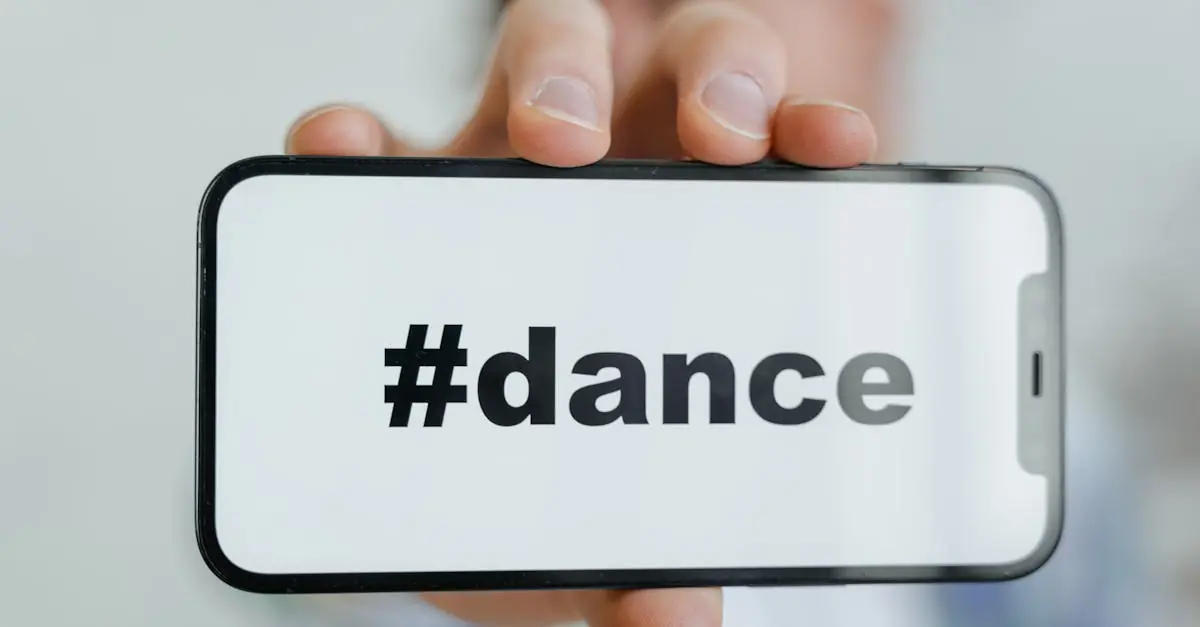In today’s digital jungle, the thought of your iPhone getting hacked just by opening a text message can feel like a scene straight out of a bad spy movie. Who knew that a simple “Hey, check this out!” could lead to a tech disaster? With cybercriminals lurking like ninjas, it’s vital to understand the risks hiding in your messages.
But don’t worry, it’s not all doom and gloom. Your iPhone has some pretty impressive security features. Still, knowing how to protect yourself from potential threats is key. So grab your popcorn, because this article dives into the truth behind those seemingly innocent texts and how to keep your device safe from digital mischief-makers.
Table of Contents
ToggleOverview of iPhone Security
iPhones are designed with robust security features that protect users from unauthorized access. Apple’s operating system focuses on encryption, making it difficult for hackers to intercept data. Security updates occur regularly, ensuring devices stay protected against newly discovered vulnerabilities.
Built-in features, like Face ID and Touch ID, enhance device security. These biometric options prevent unauthorized unlocking of the iPhone. Each encryption protocol adds a layer of protection, safeguarding personal information stored on the device.
Messages and calls use end-to-end encryption, protecting communication from external threats. Third-party apps also undergo rigorous scrutiny before approval for the App Store. Apple’s guidelines emphasize user safety, further minimizing risks associated with malicious software.
When handling text messages, users must remain vigilant. Opening a text message does not automatically lead to hacking, due to the iPhone’s security measures. However, harmful links within messages may pose risks if clicked.
Encouraging users to verify the sender’s identity helps prevent falling victim to scams. Awareness of potential phishing attempts through messages increases overall security. It’s crucial to report suspicious messages and delete them immediately after receiving.
Overall, while the risk exists, the combination of Apple’s security architecture and user awareness significantly reduces the likelihood of iPhones getting hacked through text messages.
Common Hacking Techniques
Text messages can serve as a pathway for cybercriminals to exploit vulnerabilities in your iPhone. Understanding the common hacking techniques helps in recognizing potential threats.
Phishing Attacks
Phishing attacks often involve deceptive messages that appear to come from legitimate sources. These messages encourage users to click on links or provide personal information, leading to identity theft. Scammers frequently use urgency to manipulate victims into acting quickly. A genuine sense of security may make individuals less cautious, increasing the likelihood of falling prey. Regular awareness and education regarding these tactics can mitigate risks.
Malware Distribution
Hackers utilize text messages to distribute malware by tricking users into downloading harmful applications. Specific links may lead to websites that host malware disguised as legitimate software. Once downloaded, malware can compromise device security, leading to data breaches. iPhone users face further vulnerability when they ignore warnings about unverified sources. Installations from unknown entities can result in malware compromising sensitive information, hence remaining cautious is vital.
Text Message Vulnerabilities
Text messages present potential vulnerabilities, making it crucial for users to stay informed about the risks.
iMessage vs. SMS Security
iMessage and SMS differ significantly in security features. iMessage employs end-to-end encryption protecting messages from unauthorized access. When users send iMessages, only the sender and recipient can read them. In contrast, SMS lacks this level of encryption, exposing users to greater risks. Hackers can intercept unencrypted messages more easily, leading to data breaches. iPhone users benefit from the security enhancements iMessage provides, yet SMS can still serve as a vector for attacks. Users should consider these differences when communicating sensitive information through text messages.
Social Engineering Tactics
Scammers frequently use social engineering tactics to manipulate individuals. Commonly, they exploit human emotions like fear or urgency to prompt hasty actions. Messages claiming account issues often encourage users to click on malicious links. Phishing attempts aim to harvest personal and financial information through deceptive texts. Cybercriminals may also impersonate trusted contacts to gain users’ trust. By recognizing these tactics, individuals can exercise caution when evaluating unsolicited messages. Awareness plays a critical role in thwarting these schemes and protecting personal data.
Preventative Measures for iPhone Users
Taking proactive steps ensures protection against potential hacking risks. Users can implement several strategies to safeguard their devices.
Keeping Software Updated
Regular software updates significantly enhance iPhone security. These updates include patches for vulnerabilities discovered since the last release. Activating automatic updates ensures the device always runs the latest version of the operating system. Apple’s commitment to security is evident, as updates often include crucial fixes to protect against newly identified threats. Checking for updates manually can also be wise for users who prefer more control over their device settings.
Using Security Features
Utilizing built-in security features is essential for iPhone protection. Face ID and Touch ID provide robust access control, making unauthorized entry difficult. Messages sent via iMessage feature end-to-end encryption, offering an extra layer of security that SMS lacks. Enabling two-factor authentication adds an additional safeguard for Apple ID, further reducing the risk of unauthorized access. By regularly reviewing privacy settings, users can ensure that apps only access necessary information, limiting exposure to potential threats.
Staying informed about the risks associated with text messages is crucial for iPhone users. While Apple provides robust security features that significantly reduce the chances of hacking, users must remain proactive in their approach to digital safety. Understanding the tactics used by scammers and recognizing the signs of phishing can make all the difference.
By verifying sender identities and being cautious with links, individuals can further safeguard their personal information. Regularly updating software and utilizing built-in security measures adds another layer of protection. With awareness and vigilance, users can enjoy their iPhones while minimizing the risk of cyber threats through text messages.




